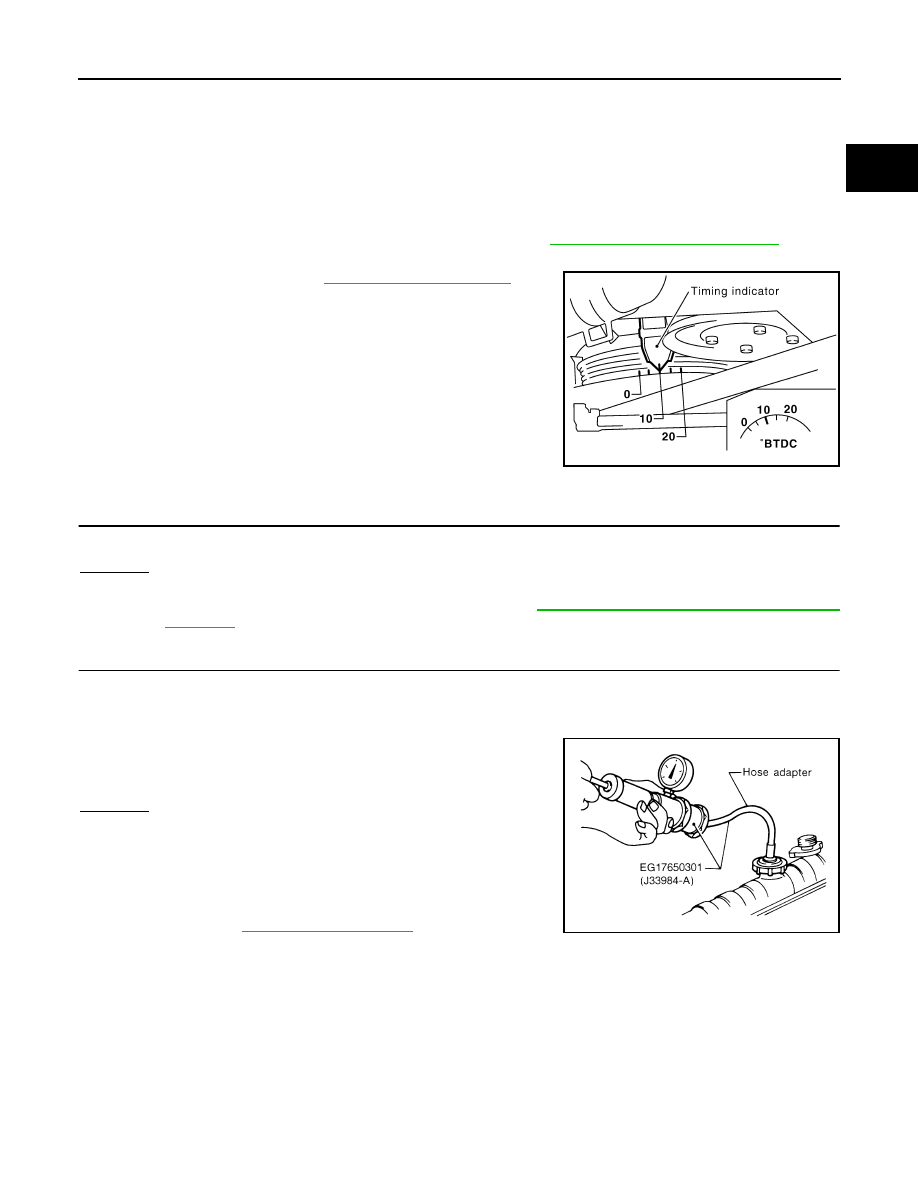Nissan Frontier D22. Manual - part 436

DTC P0217 COOLANT OVERTEMPERATURE ENRICHMENT PROTECTION
EC-847
[VG33E]
C
D
E
F
G
H
I
J
K
L
M
A
EC
Be extremely careful not to touch any moving or adjacent parts.
5.
Check radiator for blocked air passage
Check for blocked condenser or radiator (condenser or radiator fins damaged, condenser or radiator
clogged), after market fog lamps ...etc. Check for condenser or radiator fin damage, shroud damage, vehi-
cle front end for clogging of debris or insects ...etc.
Check for improper fitting of front end cover, damaged radiator grille or bumper, vehicle frontal area dam-
aged by collision but not repaired.
If NG, take appropriate action and then go to next step.
6.
Check ECT sensor for proper operation. Refer to step 5 of
EC-847, "Diagnostic Procedure"
replace ECT sensor and go to next step.
7.
Check ignition timing. Refer to
Make sure that ignition timing is 10
± 5° at 700 ± 50 rpm.
If NG, adjust ignition timing and then recheck.
Diagnostic Procedure
UBS00DJC
1.
CHECK COOLING FAN (CRANKSHAFT DRIVEN) OPERATION
Start engine and make sure that cooling fan (crankshaft driven) operates.
OK or NG
OK
>> GO TO 2.
NG
>> Check cooling fan (crankshaft driven). Refer to
CO-32, "COOLING FAN (CRANKSHAFT
2.
CHECK COOLING SYSTEM FOR LEAK
Apply pressure to the cooling system with a tester, and check if the pressure drops.
CAUTION:
Higher than the specified pressure may cause radiator damage.
Pressure should not drop.
OK or NG
OK
>> GO TO 3.
NG
>> Check the following for leak:
●
Hose
●
Radiator
●
Water pump
Refer to
SEF927Z
Testing pressure: 157 kPa (1.6 kg/cm
2
, 23 psi)
SLC754A